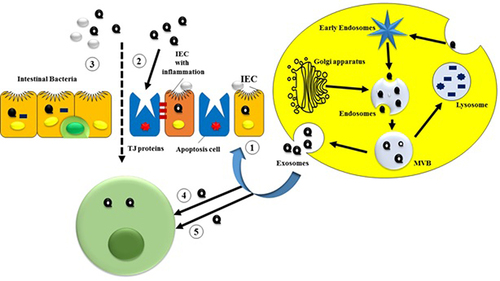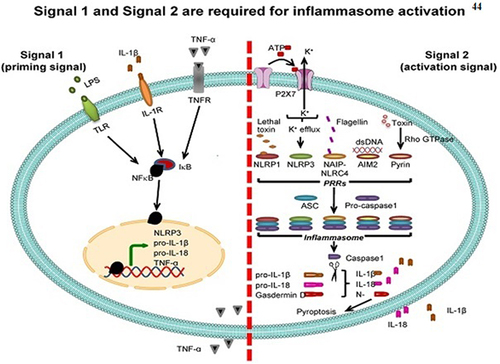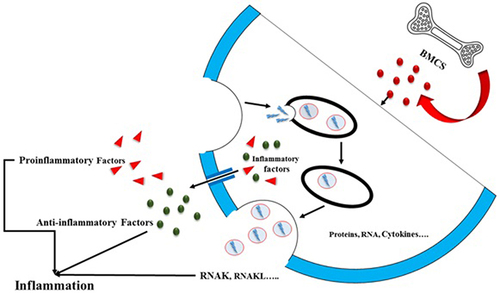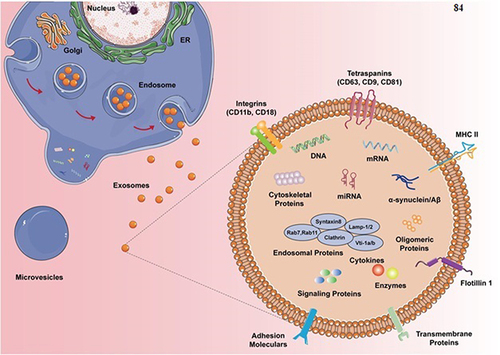Figures & data
Table 1 Shows the Most Recent Research Conducted on Exosomes as Indicators for Inflammation
Figure 1 Inward budding of the cell membrane forms early endosomes. Exosomes are produced from endosomes via inward budding of the multi-vesicular bodies (MVBs) membrane, incorporating nucleic acids, proteins, and lipids. Finally, exosomes are released into the extracellular environment through exocytosis. ➀ Exosomes from serum and saliva as novel biomarkers of IBD; ➁ Exosomes from colon cancer cells, IECs, and platelets maintain TJ barrier function; ➂ Exosomes from DCs influence the intestinal microbiota profile via heat shock proteins; ➃ IEC-derived exosomes fuse with DC membranes to induce immune tolerance; ➄ Colitis serum or treated DC exosomes regulate immune cell proliferation through MAPK, NF-κB, and other inflammatory pathways.

Figure 2 The interaction between exosomes and inflammasomes and their respective functions in inflammatory reactions. Inflammasome activation requires two signals: “signal 1” (priming) and “signal 2” (activation). The priming signal activates NF-κB, upregulating NLRP3, pro-IL-1β, pro-IL-18, and TNF-α. The activation signal induces PRRs, leading to the formation of the inflammasome complex and the conversion of pro-IL-1β and pro-IL-18 to their active forms, IL-1β and IL-18, which are then secreted. Reprinted from Noonin C, Thongboonkerd V. Exosome-inflammasome crosstalk and their roles in inflammatory responses. Theranostics. 2021;11(9):4436. Creative Commons.Citation44

Figure 3 Bone marrow mesenchymal stem cells (BMSCs) primarily release exosomes and inflammatory factors. The cytokines generated by BMSCs may be categorized into proinflammatory cytokines and anti-inflammatory cytokines. Both exosomes and cytokines can modulate distant target organs, inducing an inflammatory response.

Figure 4 Schematic of exosomal molecular composition. Exosomes contain various important biomarkers, such as proteins, lipids, and miRNAs. Reprinted from Guo M, Hao Y, Feng Y, et al. Microglial exosomes in neurodegenerative disease. 2021;14:630808. Creative Commons.Citation84

